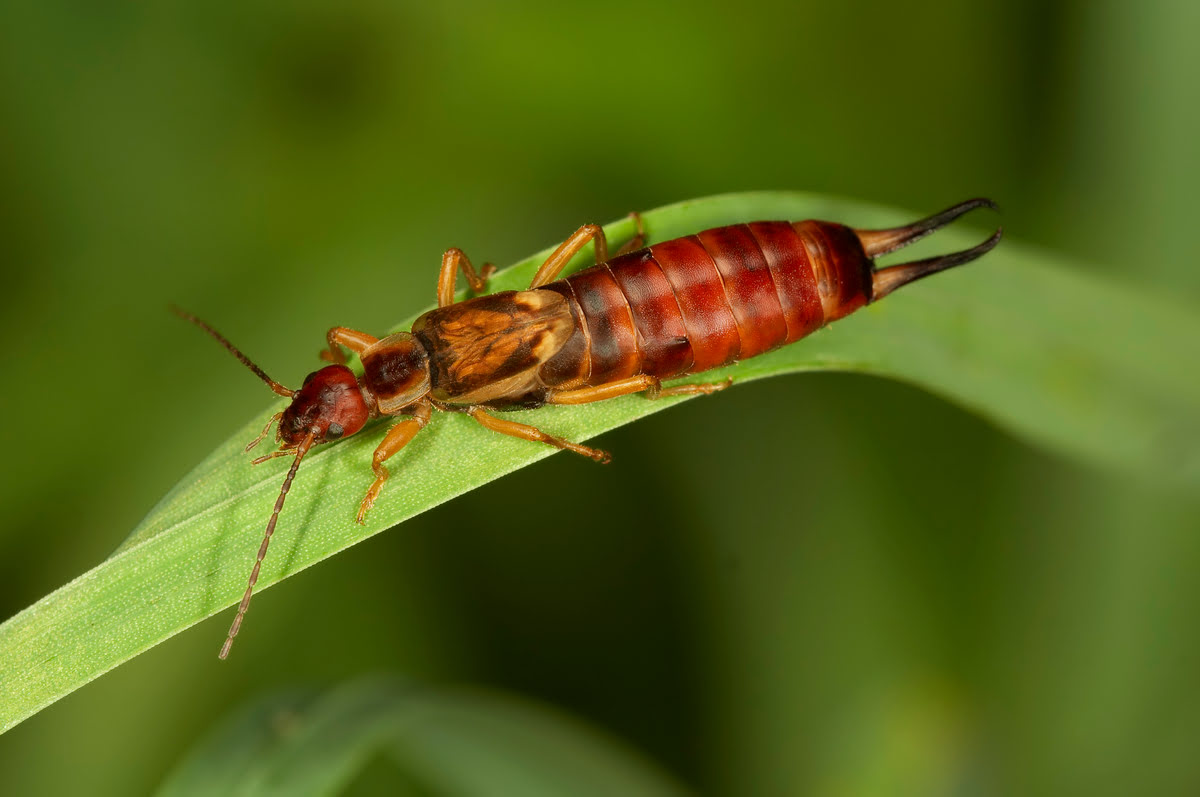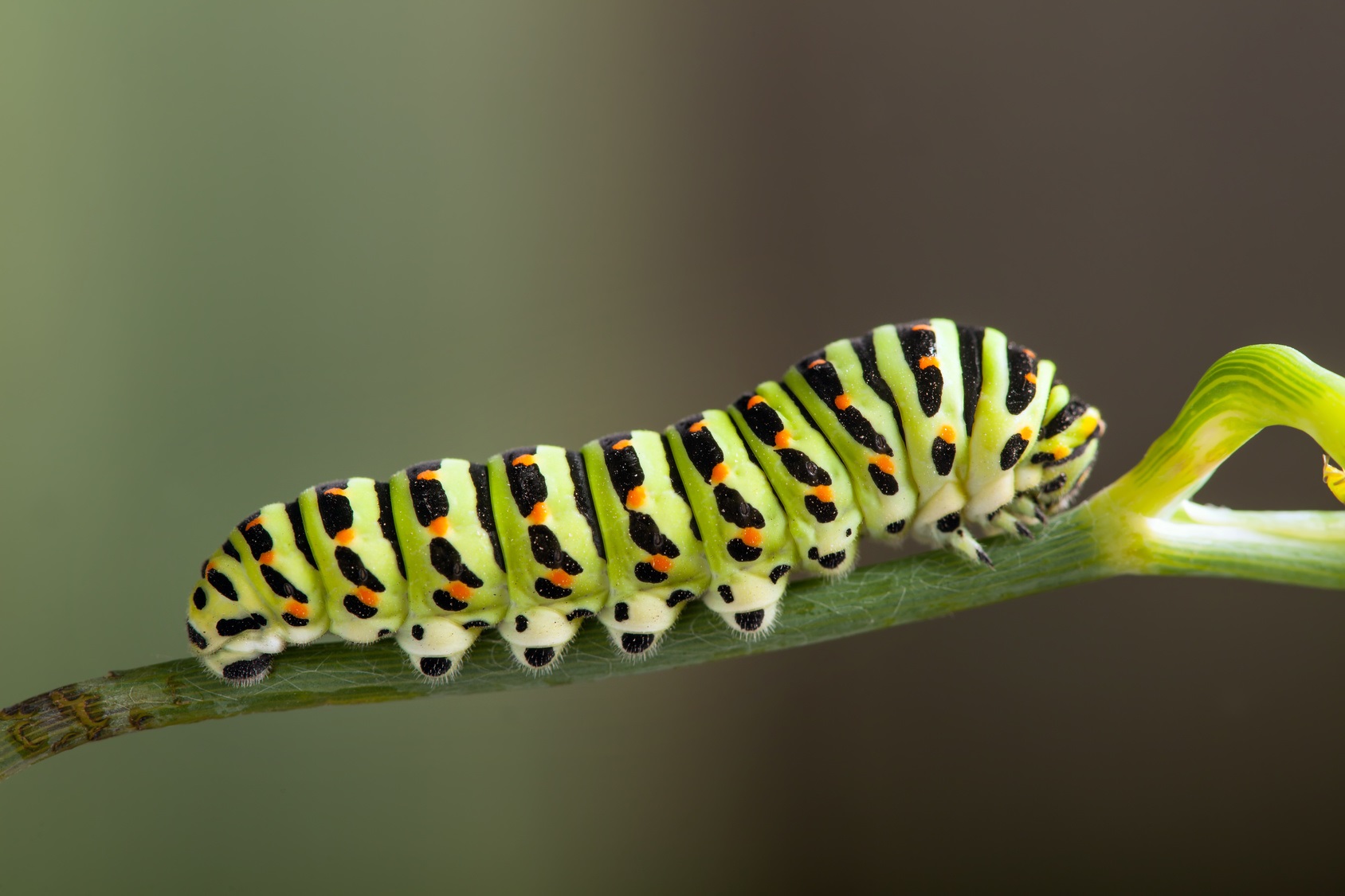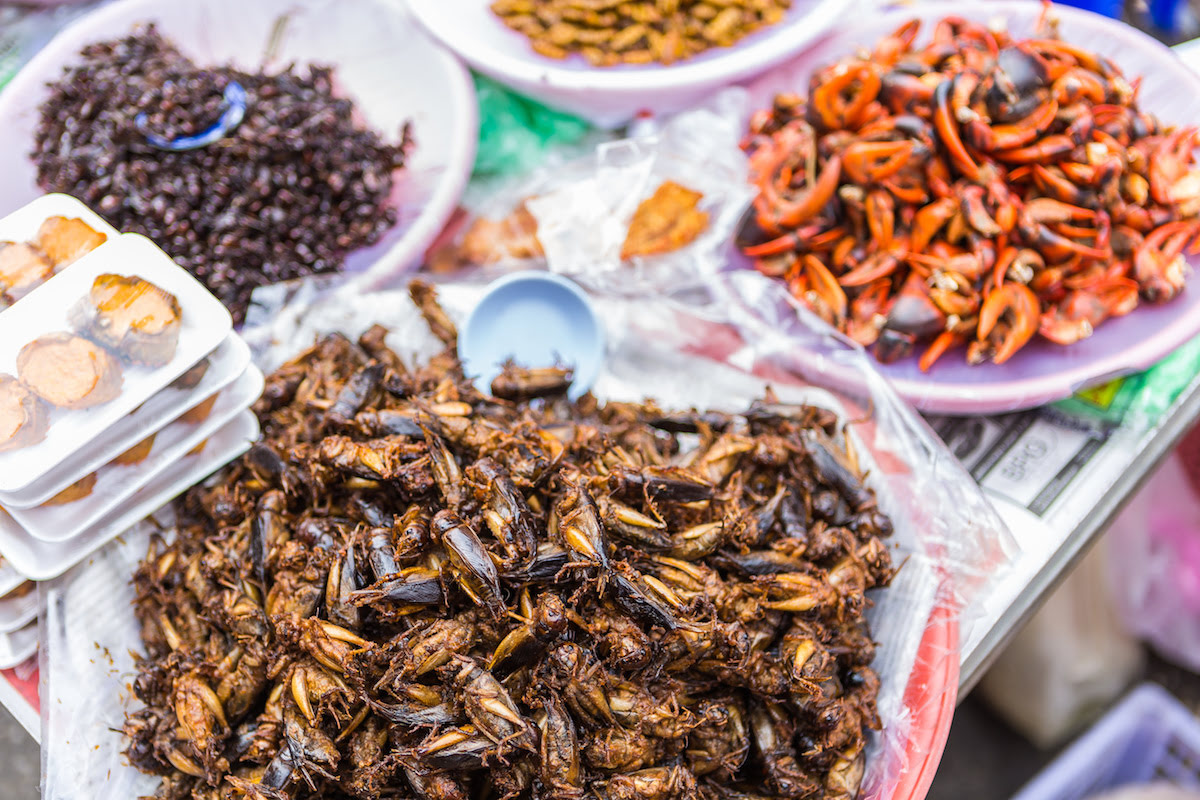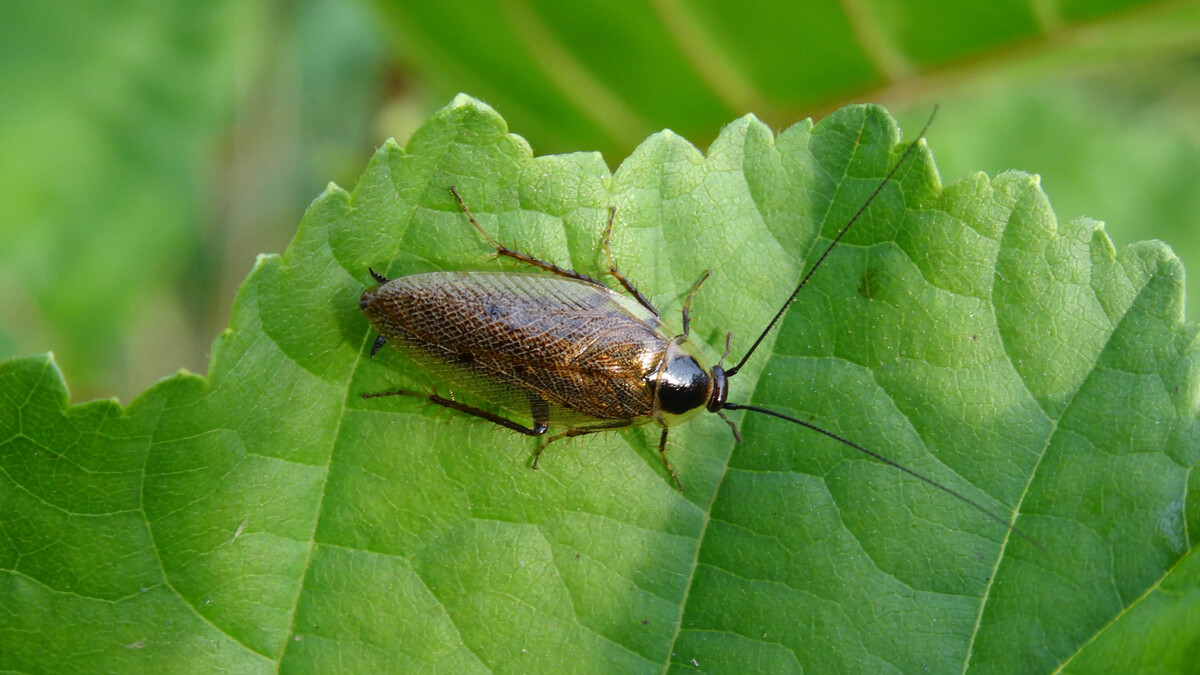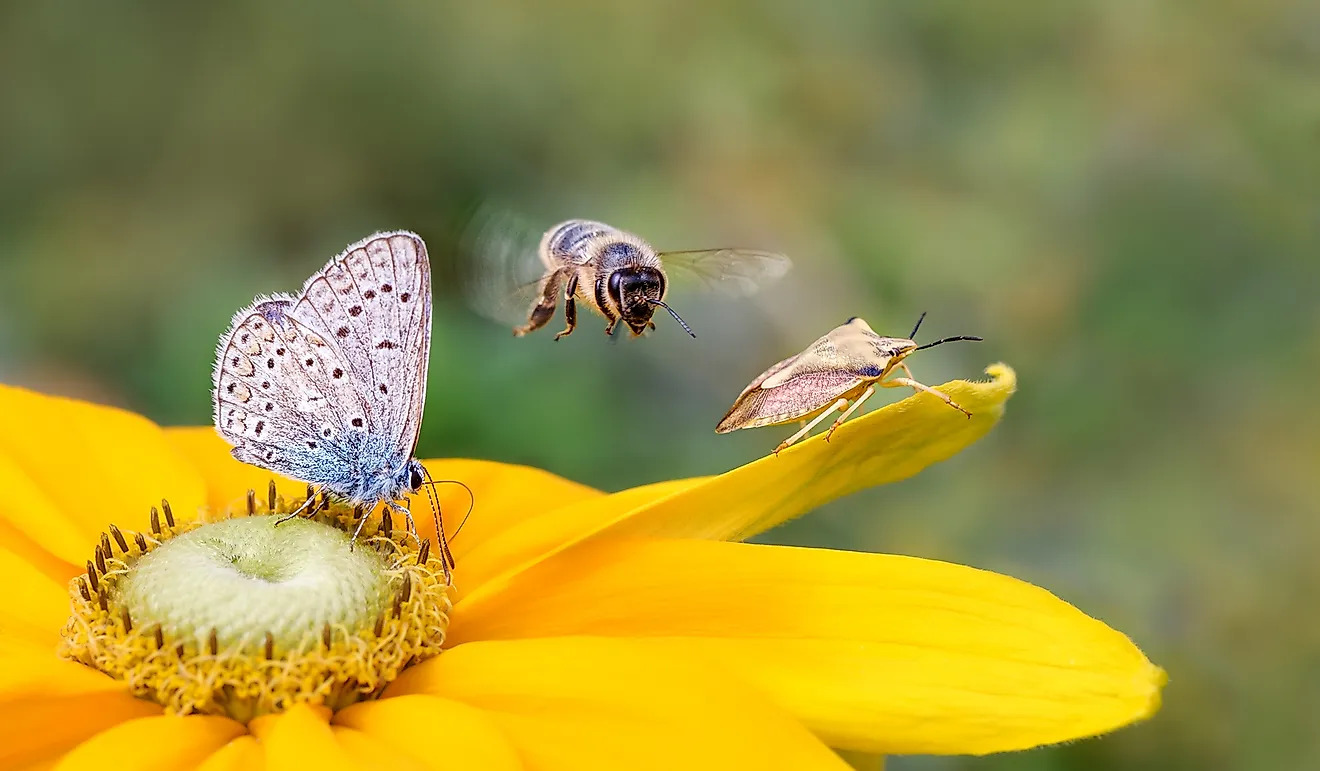Home>Gardening News and Trends>Latest News>What Is A Community Of Social Insects


Latest News
What Is A Community Of Social Insects
Published: December 7, 2023
Discover the latest news and fascinating insights about the interesting world of social insects and their intricate communities. Learn more about the behavior, organization, and significance of these captivating creatures.
(Many of the links in this article redirect to a specific reviewed product. Your purchase of these products through affiliate links helps to generate commission for Chicagolandgardening.com, at no extra cost. Learn more)
Table of Contents
Introduction
Social insects are fascinating creatures that form complex and organized societies, functioning as a cohesive unit to survive and thrive. These communities, comprised of thousands or even millions of individuals, work together in a highly coordinated manner to carry out various tasks necessary for their survival. From ants and bees to termites and wasps, social insects have evolved unique adaptations that enable them to excel in their respective roles within the community.
Unlike solitary insects, social insects have adopted a communal lifestyle, where individuals cooperate and communicate with one another to achieve common goals. This cooperative behavior has allowed social insects to build elaborate nests or colonies, develop intricate systems of communication, and divide labor efficiently. By working together, social insects are able to overcome challenges and exploit available resources more effectively than if they were acting alone.
Social insects can be found in various habitats across the globe, from dense rainforests to arid deserts. They play crucial roles in ecosystem dynamics, influencing the abundance and distribution of other species, and contributing to the overall functioning of ecosystems. The study of social insects has provided valuable insights into the evolution of cooperation, communication, and social organization not only within the insect world, but also in other social animals, including humans.
In this article, we will explore the world of social insects in more detail. We will examine the characteristics that define social insects, the different types of social insects that exist, and the benefits they provide to their respective ecosystems. Additionally, we will delve into the fascinating communication systems of social insects, the division of labor within their communities, and the reproductive strategies employed by these fascinating creatures. Finally, we will provide examples of some well-known social insect species to showcase the diversity and complexity of their societies.
Definition of Social Insects
Social insects are a group of insects that exhibit a high level of cooperation and organization within their colonies or societies. Unlike solitary insects, which live and work independently, social insects form interconnected communities, where individuals specialize in different roles and work together for the survival and success of the entire group.
One of the key features that distinguishes social insects is their eusocial behavior, which is characterized by overlapping generations of adults, cooperative care of the young, and division of labor. This means that within a social insect colony, there are usually multiple generations of individuals, some of which are responsible for reproducing while others perform tasks such as foraging, defending the colony, and caring for the offspring.
Social insect colonies are typically organized hierarchically, with a caste system in place. Caste differentiation refers to the division of individuals into distinct groups or castes based on their specific roles in the colony. These castes often include queens, reproductive males, workers, soldiers, and sometimes specialized individuals such as nurses or foragers.
While the caste system varies across different social insect species, it generally involves queens, who are responsible for egg-laying and reproduction, and workers, who fulfill various tasks to maintain and support the colony. The workers are typically sterile females, as the queens monopolize reproductive duties.
It’s important to note that not all social insects have the same level of social complexity. Some species exhibit more rudimentary forms of social behavior, known as subsociality, where parents and offspring may live together temporarily and collaborate to care for the young. Other social insects, such as ants, bees, wasps, and termites, are considered eusocial and have developed highly sophisticated social systems.
The study of social insects has contributed greatly to our understanding of social organization, cooperation, and communication within both the insect world and beyond. By exploring the principles and mechanisms that govern social insect societies, scientists have gained valuable insights into questions about the evolution of sociality, the benefits of cooperation, and the ecological significance of group living.
Characteristics of Social Insects
Social insects possess a range of unique characteristics that enable them to function as cohesive and efficient communities. These characteristics have evolved over time and have contributed to the success and resilience of social insect societies.
One of the key characteristics of social insects is the division of labor. Within a colony, individuals assume specific roles and carry out specialized tasks that contribute to the overall functioning of the community. This division of labor allows social insects to efficiently allocate resources and ensure that all necessary activities, such as foraging, nest building, defense, and caring for the young, are performed.
Communication is another vital characteristic of social insects. They have evolved elaborate communication systems, which involve the use of chemical cues, tactile signals, and sometimes auditory or visual signals. Through these communication channels, social insects are able to convey information about food sources, danger, reproductive status, and other important aspects of their environment, facilitating cooperative behavior and coordination within the colony.
Another notable characteristic of social insects is their ability to construct intricate nests or colonies. Whether it’s the intricate tunnels and chambers of ants, the hexagonal cells of bees, or the towering mounds of termites, social insects exhibit impressive architectural abilities. These structures provide shelter, protection, and a conducive environment for the community to thrive.
Social insects also display high levels of altruism. This means that individuals within the community are willing to sacrifice their own reproductive opportunities or even risk their lives to benefit the greater good of the colony. This selflessness is particularly evident in worker individuals, who often act in the best interest of the colony, even though they do not reproduce themselves.
Furthermore, social insects have developed sophisticated mechanisms for colony defense. They have evolved specialized structures, such as stingers, mandibles, or chemical weaponry, to protect the colony from predators and rival colonies. Through cooperation and coordinated defense strategies, social insects can effectively fend off threats and ensure the safety of the nest.
Overall, the characteristics of social insects, including division of labor, communication, nest construction, altruism, and defense mechanisms, have allowed these fascinating creatures to form complex and organized societies. These characteristics contribute to their ability to exploit resources, adapt to changing environments, and ensure the survival and success of the entire colony.
Types of Social Insects
Social insects encompass a diverse array of species, each with its own unique characteristics and social organization. While ants, bees, wasps, and termites are some of the most well-known social insects, there are other less prominent groups that also exhibit social behavior.
Ants are one of the most successful groups of social insects, with over 12,000 known species. They form highly organized colonies, often with specific castes of individuals, such as queens, workers, and soldiers. Ant colonies can vary in size and structure, from a few dozen individuals to millions, and they exhibit a wide range of behaviors, including cooperative foraging, nest building, and territorial defense.
Bees are another prominent group of social insects, known for their complex communication and hive construction. Honeybees, for example, live in large colonies headed by a queen and comprise thousands of female worker bees. Their elaborate waggle dance permits them to communicate the location of nectar sources to one another. Bees are vital pollinators and play a crucial role in the reproduction of flowering plants.
Wasps also exhibit social behavior, although not all species are social. Some wasps live solitarily, while others form small colonies with a queen and a few workers. Social wasps often build intricate nests made of paper or mud and are known for their aggressive defense of their colony. They contribute to pest control by preying on insects and help with pollination as well.
Termites, often mistaken as ants, are social insects that live in highly structured colonies and are known for their ability to break down cellulose. They form large, complex nests and are categorized into different castes, including the reproductive king and queen, workers, soldiers, and sometimes intermediates. Termites play important roles in nutrient recycling and ecosystem processes.
In addition to ants, bees, wasps, and termites, there are other social insects that are less well-known but equally fascinating. For example, certain species of aphids exhibit social behavior, with individuals living in colonies and displaying division of labor. Some species of thrips, a type of tiny insect, are also social and form aggregations for feeding, mating, and protection.
Overall, social insects encompass a diverse range of species, each with its own unique set of social behaviors and organizational structures. By exploring the various types of social insects, we can gain a deeper appreciation for the remarkable adaptations and complexities that allow these communities to thrive.
Benefits of Social Insects
Social insects play crucial roles in ecosystems and provide numerous benefits to both their environment and other species. Their complex societies and cooperative behaviors contribute to the overall functioning and balance of ecosystems in several ways.
One of the key benefits of social insects is their role as pollinators. Bees, for example, are exceptional pollinators and are responsible for the pollination of a wide variety of flowering plants. Through their foraging activities, bees transfer pollen between flowers, facilitating plant reproduction and ensuring the production of seeds and fruits. This critical service provided by social insects is crucial for maintaining plant diversity and sustaining ecosystems.
Another benefit of social insects is their contribution to nutrient cycling and decomposition processes. Termites, for instance, are highly efficient decomposers, breaking down dead plant material and recycling nutrients back into the ecosystem. They play a vital role in breaking down cellulose, a component of plant cell walls that many other organisms cannot digest. This decomposition process helps to enrich the soil and promote the growth of other plants.
In addition to pollination and decomposition, social insects also provide pest control services. Some social insects, like ants and wasps, are voracious predators and feed on a variety of insects, including pests that can damage crops or transmit diseases. By controlling the populations of these pest species, social insects help to maintain ecosystem balance and increase agricultural productivity.
Furthermore, social insects serve as a food source for other organisms. Birds, reptiles, mammals, and even other insects prey on social insects as a valuable source of nutrition. Their abundance and availability make them an important component of the food web, playing a role in sustaining predator populations and overall ecosystem health.
Social insects also contribute to soil formation and stability. Ants, for instance, are known for their nest building activities, which involve excavating soil and creating extensive underground chambers. These actions can enhance soil aeration and nutrient cycling, improving soil fertility and structure. In addition, the tunnels created by social insects can increase water infiltration and reduce erosion.
Overall, social insects provide a range of ecological benefits, including pollination, nutrient cycling, pest control, food sources, and soil formation. Their presence and activities have far-reaching impacts on ecosystems, highlighting the importance of understanding and conserving these remarkable creatures.
Communication Among Social Insects
Communication is a fundamental aspect of social insect societies, enabling individuals to coordinate their activities, share information, and maintain the cohesion of the community. Social insects have evolved various sophisticated communication systems, which involve the use of chemical, tactile, auditory, and visual signals.
Chemical communication, or pheromone signaling, is particularly prominent among social insects. Pheromones are chemical substances that are released by individuals and detected by others of the same species. These pheromones convey messages about various aspects of the environment, including food availability, alarm signals, trail marking, and reproductive status. For example, ants use trail pheromones to communicate the location of a food source, allowing other colony members to follow the scent trail and find the food efficiently.
Tactile communication is also common in social insects. Individuals engage in physical contact and interact with one another, conveying information through touch. This can include grooming behaviors, antennation (touching antennae), trophallaxis (exchange of food or liquid), or mutual recognition gestures. Tactile communication plays an essential role in social bonding, cooperation, and social hierarchies within the colony.
Auditory communication is observed in some social insects, although it is less common compared to chemical and tactile communication. Certain species of bees and wasps, for example, produce buzzing or vibrating sounds to communicate with nestmates. These sounds may signal the need for assistance, the presence of predators, or even the location of the nest entrance.
Visual signals, although less prevalent, are also utilized by social insects. Some species, such as honeybees, perform intricate dances to communicate the location and quality of food sources. Through these dance movements, bees convey information about the direction and distance of the food in relation to the position of the sun.
The sophisticated communication systems of social insects allow for effective coordination of activities and division of labor within the colony. By relaying information about resources, dangers, and reproductive conditions, social insects are able to respond quickly and efficiently to changes in their environment. This communication ensures the smooth functioning of the colony and helps to optimize resource allocation and decision-making processes.
It is important to note that social insects have evolved these communication systems through a combination of genetic predisposition and learning. While some aspects of communication are innate, others, such as the recognition of specific pheromones or the interpretation of dance patterns, can be learned through experience and social interactions.
The study of communication among social insects provides valuable insights into the mechanisms and evolution of communication systems, not only in insects but also in other social animals, including humans. By unraveling the complexities of social insect communication, researchers can gain a deeper understanding of cooperative behavior, information sharing, and social organization in diverse species.
Division of Labor in Social Insects
One of the defining characteristics of social insects is their division of labor, where individuals within a colony assume specialized roles and perform specific tasks necessary for the survival and functioning of the community. This division of labor maximizes efficiency and allows social insects to exploit resources more effectively than if each individual were acting independently.
Within a social insect colony, individuals are assigned different tasks based on their age, physiological state, and caste. The caste system is a key feature of social insects and involves the differentiation of individuals into distinct groups with specific roles and responsibilities.
At the heart of the caste system are the reproductive individuals, known as queens and, sometimes, males. Queens are typically the primary egg-layers of the colony, ensuring the continuation of the genetic lineage. The reproductive caste is generally female, and their primary function is to mate and lay eggs. In some species, males are present solely for the purpose of mating with the queen.
The majority of individuals in a social insect colony are non-reproductive females known as workers. These workers assume various tasks, which can include foraging for food, nest construction, caring for the young, defending the colony, and maintaining social harmony. The workers are often sterile and do not reproduce themselves. Instead, they devote their energy and efforts to supporting the reproductive individuals, ensuring the survival and success of the colony as a whole.
In some social insect species, the division of labor is more pronounced and specialized. For example, in honeybee colonies, workers progress through different age-specific tasks, known as temporal polyethism. Younger workers often assume roles within the hive, such as nursing the brood and building comb, while older workers venture outside to forage for nectar and pollen. This age-based division of labor ensures that different tasks are carried out by individuals with the appropriate physiological and behavioral capabilities.
In addition to age-based division, social insects may also exhibit task-based division of labor. For instance, in ant colonies, different workers may specialize in specific tasks, such as foraging, defense, or brood care. This specialization allows for greater efficiency, as individuals become highly proficient at their assigned tasks through repetition and experience.
The division of labor in social insects is not rigid and can change in response to environmental conditions, colony needs, or developmental stages. Workers can transition between tasks or castes based on factors such as resource availability, colony size, threats, or the loss of reproductive individuals.
The division of labor among social insects is a remarkable adaptation that allows colonies to function as cohesive units and maximize their collective fitness. By specializing in different tasks, social insects can allocate resources, execute complex activities, and adapt to changing circumstances more efficiently, ultimately ensuring the overall success and survival of the community.
Reproduction in Social Insects
Reproduction in social insects is a fascinating process that involves specialized reproductive individuals, such as queens and males, and a highly organized system of mating and breeding within the colony. The reproductive strategies of social insects vary among different species, but they all involve specific mechanisms to ensure the survival and genetic diversity of the colony.
Queens are key reproductive individuals in social insect colonies. They are typically larger and have specialized morphology and physiology that enable them to perform their reproductive duties. Queens have the ability to produce and store large numbers of eggs, ensuring the continuous production of offspring. Depending on the species, queens may mate once in their lifetime (monandrous) or mate multiple times with different males (polyandrous).
Male reproductive individuals, often referred to as drones, have the primary function of mating with queens. Drones are typically produced in larger numbers during specific periods, often in anticipation of a mating event. Once they have mated, drones serve no other purpose and are either expelled or die.
Mating in social insects involves complex behaviors and often occurs outside the home colony. In honeybees, for example, mating flights are conducted by virgin queens, where they fly to a “drone congregation area” and mate with multiple drones. The sperm obtained during these mating flights is stored within the queen’s body and used for fertilizing eggs throughout her lifetime.
After mating, the queen returns to the colony and establishes her own nest or joins an existing one. She then begins to lay eggs, which can vary in size and type depending on the needs of the colony. Fertilized eggs, which receive genetic material from both the queen and a drone, develop into female workers or new queens. Unfertilized eggs, which only contain the queen’s genetic material, develop into males.
The development of eggs into different castes or sexes is regulated by a variety of factors, including nutrition, pheromones, and temperature. The presence of a queen pheromone, for example, can suppress the development of potential rival queens within the colony. Additionally, social insects can engage in various forms of reproductive suppression, where workers exhibit behaviors that prevent or minimize the reproductive capabilities of each other.
Reproduction in social insects is not limited to the queen alone. In some instances, workers may have the ability to lay eggs, which are typically unfertilized and develop into males. This behavior, known as parthenogenesis, ensures the continued reproduction of the colony in the absence or loss of a queen.
The reproductive strategies of social insects are diverse and have evolved to maximize the reproductive success and genetic diversity of the colony. Through their specialized reproductive individuals, complex mating behaviors, and mechanisms for caste determination, social insects have developed intricate systems to ensure the survival and future generations of their communities.
Examples of Social Insects
Social insects encompass a vast array of species, each with its own unique characteristics and social organization. Let’s explore a few examples of notable social insect species that showcase the diversity and complexity of their societies.
Ants are among the most exemplary social insects. There are over 12,000 known ant species, and they exhibit a wide range of social behaviors. For instance, leaf-cutter ants, found in the tropical regions of the Americas, form massive colonies with complex caste systems and division of labor. These ants are known for their impressive leaf-cutting abilities, as they use the leaves to cultivate a fungus, which serves as their primary food source. Additionally, fire ants, native to South America but now found in various parts of the world, construct elaborate nests and exhibit aggressive swarm behaviors when their colony is threatened.
Bees are another prominent group of social insects. Honeybees, particularly the Western honeybee (Apis mellifera), are known for their highly organized society and sophisticated communication systems. Honeybees live in colonies that consist of a queen, thousands of female workers, and a few male drones. Their intricate dance language, the “waggle dance,” allows for precise communication of the location and quality of food sources. Bees are important pollinators and play a vital role in the pollination of numerous flowering plants.
Termites are social insects that have evolved complex societies and impressive nest-building abilities. They are often mistaken for ants, but are more closely related to cockroaches. Termites construct elaborate and resilient nests, such as tall mounds or extensive underground structures, which provide shelter, regulate temperature and humidity, and enhance resource acquisition. Termites are critical decomposers, breaking down wood and plant material, and contribute to nutrient recycling in ecosystems.
Wasps, particularly the paper wasps, are social insects that build intricate nests made of paper-like material. They exhibit a range of social behaviors, from small colonies with a queen and a few workers to larger colonies with multiple queens and numerous workers. Paper wasps are known for their aggressive defensive behavior and play a role in pest control by preying on insects that may damage crops.
There are also lesser-known examples of social insects beyond ants, bees, termites, and wasps. For instance, naked mole rats, although not insects but eusocial mammals, form colonies with a distinct social structure, including a queen and non-reproductive workers. These underground rodents exhibit cooperative behavior, specialized roles, and a long lifespan compared to other rodent species.
Another interesting example is the weaver ants, found primarily in tropical regions. Weaver ants are known for their exceptional nest-building abilities, as they construct nests made of leaves and silk using their larvae as “living glue guns.” The colonies of weaver ants display intricate division of labor and coordination in their foraging activities, creating a fascinating spectacle in the forest canopy.
These examples represent just a fraction of the diverse and fascinating world of social insects. The wide range of social organizations, unique adaptations, and cooperative behaviors exhibited by social insects continue to captivate researchers and enthusiasts alike, offering valuable insights into the complexities of social living and cooperation across the animal kingdom.
Conclusion
Social insects are remarkable creatures that have evolved complex societies, characterized by division of labor, communication systems, and reproductive strategies. Through their cooperative behaviors and organized communities, social insects are able to overcome challenges, exploit resources, and ensure the survival and success of the colony.
From ants and bees to termites and wasps, social insects showcase a wide range of social behaviors and adaptations. Their division of labor allows individuals to specialize in specific tasks, optimizing efficiency and resource allocation. Communication systems, such as chemical signals, tactile interactions, auditory cues, and visual displays, enable social insects to coordinate activities, share information, and maintain the cohesion of the colony.
Throughout their societies, social insects exhibit fascinating reproductive strategies. Queens, often the reproductive leaders of the colony, lay eggs and ensure the continuity of the genetic lineage. Mating behaviors, such as mating flights and drone congregations, allow for the exchange of genetic material. Workers, on the other hand, focus on supporting the reproductive individuals and performing crucial tasks for the colony’s survival.
Social insects provide a range of benefits to ecosystems and other species. They contribute to pollination, ensuring the reproduction of flowering plants, and play essential roles in nutrient cycling, decomposition, and soil formation. Social insects also provide pest control, serve as a valuable food source for other organisms, and influence the balance and dynamics of ecosystems.
Examples of social insects, such as ants, bees, termites, wasps, and even lesser-known species like naked mole rats and weaver ants, highlight the diversity and complexity of their societies. These examples demonstrate the various adaptations and behaviors that have allowed social insects to thrive in different environments and contribute to the overall functioning of ecosystems.
The study of social insects continues to provide valuable insights into cooperative behavior, communication systems, division of labor, and the evolution of sociality. By unraveling the intricacies of social insect societies, scientists can gain a deeper understanding of social organization, resource allocation, and the ecological significance of social living.
In summary, social insects are fascinating creatures that have captured the attention of researchers and nature enthusiasts around the world. Their complex societies, division of labor, communication systems, and reproductive strategies offer a glimpse into the remarkable intricacies of social living and cooperative behavior in the natural world.


